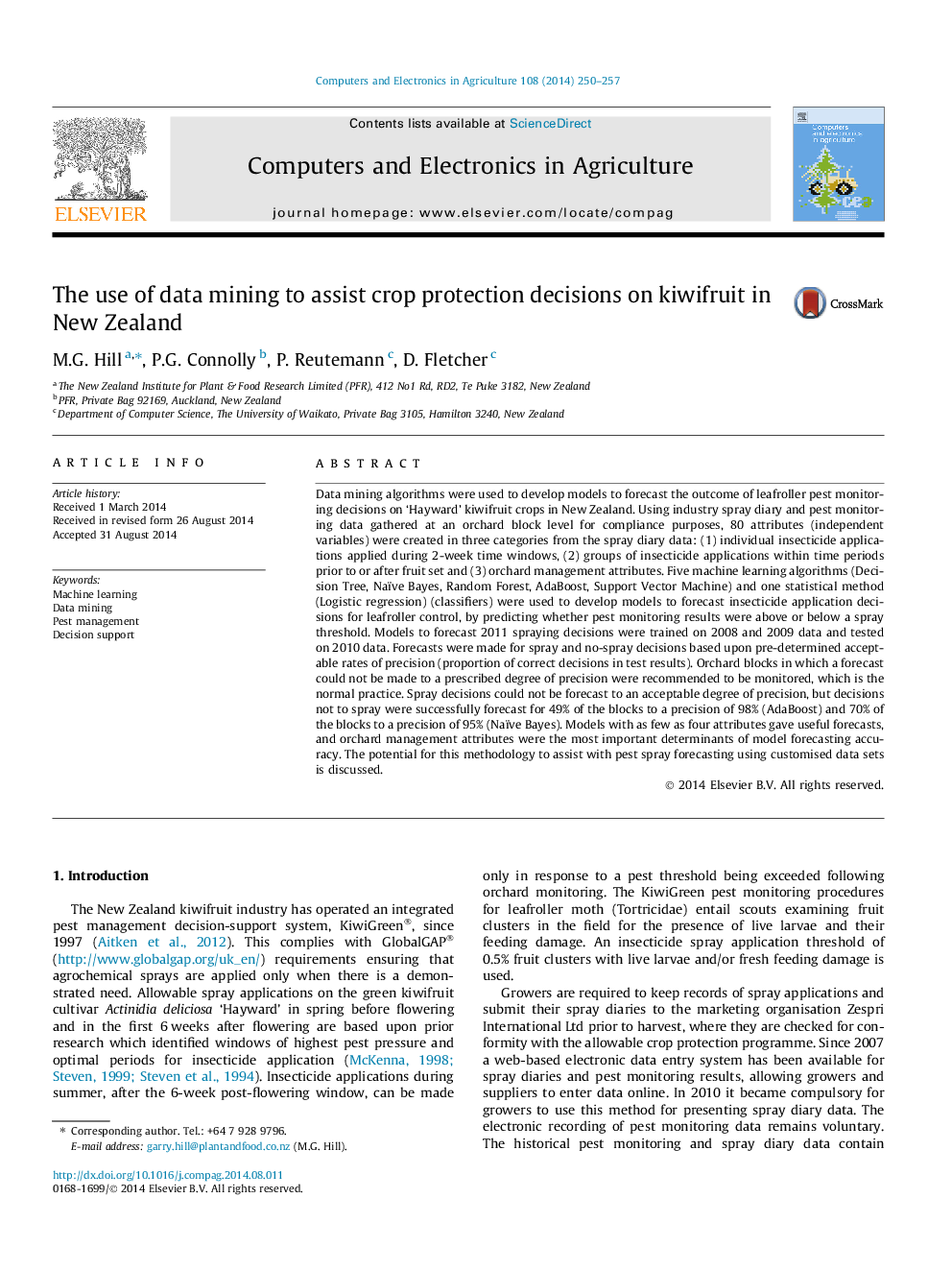| کد مقاله | کد نشریه | سال انتشار | مقاله انگلیسی | نسخه تمام متن |
|---|---|---|---|---|
| 84280 | 158871 | 2014 | 8 صفحه PDF | دانلود رایگان |
• A method is developed to predict insecticide spray decisions using machine learning.
• Spray diary data are used to predict the outcome of spray monitoring decisions.
• Using a naive Bayes model 70% of no-spray decisions were made to accuracy of 95%.
• The method provides new insights into factors affecting pest incidence and control.
• The method has wide application if linked with on-orchard data capture measures.
Data mining algorithms were used to develop models to forecast the outcome of leafroller pest monitoring decisions on ‘Hayward’ kiwifruit crops in New Zealand. Using industry spray diary and pest monitoring data gathered at an orchard block level for compliance purposes, 80 attributes (independent variables) were created in three categories from the spray diary data: (1) individual insecticide applications applied during 2-week time windows, (2) groups of insecticide applications within time periods prior to or after fruit set and (3) orchard management attributes. Five machine learning algorithms (Decision Tree, Naïve Bayes, Random Forest, AdaBoost, Support Vector Machine) and one statistical method (Logistic regression) (classifiers) were used to develop models to forecast insecticide application decisions for leafroller control, by predicting whether pest monitoring results were above or below a spray threshold. Models to forecast 2011 spraying decisions were trained on 2008 and 2009 data and tested on 2010 data. Forecasts were made for spray and no-spray decisions based upon pre-determined acceptable rates of precision (proportion of correct decisions in test results). Orchard blocks in which a forecast could not be made to a prescribed degree of precision were recommended to be monitored, which is the normal practice. Spray decisions could not be forecast to an acceptable degree of precision, but decisions not to spray were successfully forecast for 49% of the blocks to a precision of 98% (AdaBoost) and 70% of the blocks to a precision of 95% (Naïve Bayes). Models with as few as four attributes gave useful forecasts, and orchard management attributes were the most important determinants of model forecasting accuracy. The potential for this methodology to assist with pest spray forecasting using customised data sets is discussed.
Journal: Computers and Electronics in Agriculture - Volume 108, October 2014, Pages 250–257
